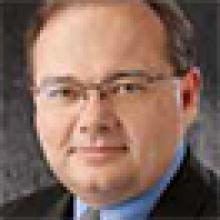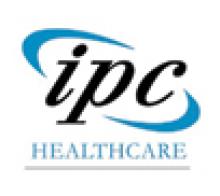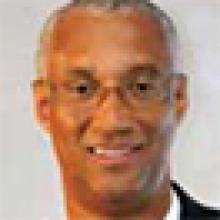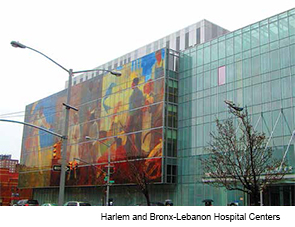User login
New Guidelines for Platelet Transfusions in Adults
Clinical question: What is the recommended approach to platelet transfusion in several common clinical scenarios?
Background: The AABB (formerly American Association of Blood Banks) developed these guidelines from a recent systematic review on platelet transfusion.
Synopsis: One strong recommendation was made based on moderate-quality evidence. Four weak or uncertain recommendations were made based on low- or very low-quality evidence.
For hospitalized patients with therapy-induced hypoproliferative thrombocytopenia, transfusion of up to a single unit of platelets is recommended for a platelet count of 10x109 cells/L or less to reduce the risk of spontaneous bleeding (strong recommendation, moderate-quality evidence).
For patients undergoing elective central venous catheter placement, platelet transfusion is recommended for a platelet count of less than 20x109 cells/L (weak recommendation, low-quality evidence).
For patients undergoing elective diagnostic lumbar puncture, platelet transfusion is recommended for a platelet count of less than 50x109 cells/L (weak recommendation, very low-quality evidence).
For patients undergoing major elective non-neuraxial surgery, platelet transfusion is recommended for a platelet count of less than 50x109 cells/L (weak recommendation, very low-quality evidence).
For patients undergoing cardiopulmonary bypass surgery, it is recommended that surgeons not perform routine transfusion of platelets in non-thrombocytopenic patients. For patients who have peri-operative bleeding with thrombocytopenia and/or evidence of platelet dysfunction, platelet transfusion is recommended (weak recommendation, very low-quality evidence).
There is insufficient evidence to recommend for or against platelet transfusion in patients with intracranial hemorrhage who are taking antiplatelet medications (uncertain recommendation, very low-quality evidence).
Clinical question: What is the recommended approach to platelet transfusion in several common clinical scenarios?
Background: The AABB (formerly American Association of Blood Banks) developed these guidelines from a recent systematic review on platelet transfusion.
Synopsis: One strong recommendation was made based on moderate-quality evidence. Four weak or uncertain recommendations were made based on low- or very low-quality evidence.
For hospitalized patients with therapy-induced hypoproliferative thrombocytopenia, transfusion of up to a single unit of platelets is recommended for a platelet count of 10x109 cells/L or less to reduce the risk of spontaneous bleeding (strong recommendation, moderate-quality evidence).
For patients undergoing elective central venous catheter placement, platelet transfusion is recommended for a platelet count of less than 20x109 cells/L (weak recommendation, low-quality evidence).
For patients undergoing elective diagnostic lumbar puncture, platelet transfusion is recommended for a platelet count of less than 50x109 cells/L (weak recommendation, very low-quality evidence).
For patients undergoing major elective non-neuraxial surgery, platelet transfusion is recommended for a platelet count of less than 50x109 cells/L (weak recommendation, very low-quality evidence).
For patients undergoing cardiopulmonary bypass surgery, it is recommended that surgeons not perform routine transfusion of platelets in non-thrombocytopenic patients. For patients who have peri-operative bleeding with thrombocytopenia and/or evidence of platelet dysfunction, platelet transfusion is recommended (weak recommendation, very low-quality evidence).
There is insufficient evidence to recommend for or against platelet transfusion in patients with intracranial hemorrhage who are taking antiplatelet medications (uncertain recommendation, very low-quality evidence).
Clinical question: What is the recommended approach to platelet transfusion in several common clinical scenarios?
Background: The AABB (formerly American Association of Blood Banks) developed these guidelines from a recent systematic review on platelet transfusion.
Synopsis: One strong recommendation was made based on moderate-quality evidence. Four weak or uncertain recommendations were made based on low- or very low-quality evidence.
For hospitalized patients with therapy-induced hypoproliferative thrombocytopenia, transfusion of up to a single unit of platelets is recommended for a platelet count of 10x109 cells/L or less to reduce the risk of spontaneous bleeding (strong recommendation, moderate-quality evidence).
For patients undergoing elective central venous catheter placement, platelet transfusion is recommended for a platelet count of less than 20x109 cells/L (weak recommendation, low-quality evidence).
For patients undergoing elective diagnostic lumbar puncture, platelet transfusion is recommended for a platelet count of less than 50x109 cells/L (weak recommendation, very low-quality evidence).
For patients undergoing major elective non-neuraxial surgery, platelet transfusion is recommended for a platelet count of less than 50x109 cells/L (weak recommendation, very low-quality evidence).
For patients undergoing cardiopulmonary bypass surgery, it is recommended that surgeons not perform routine transfusion of platelets in non-thrombocytopenic patients. For patients who have peri-operative bleeding with thrombocytopenia and/or evidence of platelet dysfunction, platelet transfusion is recommended (weak recommendation, very low-quality evidence).
There is insufficient evidence to recommend for or against platelet transfusion in patients with intracranial hemorrhage who are taking antiplatelet medications (uncertain recommendation, very low-quality evidence).
Shorter Treatment for Vertebral Osteomyelitis May Be as Effective as Longer Treatment
Clinical question: Is a six-week regimen of antibiotics as effective as a 12-week regimen in the treatment of vertebral osteomyelitis?
Background: The optimal duration of antibiotic treatment for vertebral osteomyelitis is unknown. Previous guidelines recommending six to 12 weeks of therapy have been based on expert opinion rather than clinical trial data.
Study design: Multi-center, open-label, randomized controlled trial.
Setting: Seventy-one medical care centers in France.
Synopsis: Three hundred fifty-six adult patients with culture-proven bacterial vertebral osteomyelitis were randomized to six- or 12- week antibiotic treatment regimens. The primary outcome was confirmed cure of infection at 12 months, as defined by absence of pain, fever, and CRP <10 mg/L. Outcomes were determined by a blinded panel of physicians.
Results showed 90.9% of the patients in the six-week group, and 90.8% of the patients in the 12-week group, met criteria for clinical cure. The lower bound of the 95% confidence interval for the difference in percentages of cure between groups was -6.2%, satisfying the predetermined noninferiority margin of 10%.
Antibiotic therapy in this trial was governed by French guidelines, which recommend oral fluoroquinolones and rifampin as first-line agents for vertebral osteomyelitis. Median duration of IV antibiotic therapy was less than 14 days. Relatively few patients had abscesses, and only eight of the 145 patients with Staphylococcus aureus (SA) infections had methicillin-resistant SA (MRSA).
Bottom line: A six-week regimen of antibiotics was shown to be noninferior to a 12-week regimen for treatment of vertebral osteomyelitis. Treatment for longer than six weeks may be indicated in the setting of drug-resistant organisms, extensive bone destruction, or abscesses.
Clinical question: Is a six-week regimen of antibiotics as effective as a 12-week regimen in the treatment of vertebral osteomyelitis?
Background: The optimal duration of antibiotic treatment for vertebral osteomyelitis is unknown. Previous guidelines recommending six to 12 weeks of therapy have been based on expert opinion rather than clinical trial data.
Study design: Multi-center, open-label, randomized controlled trial.
Setting: Seventy-one medical care centers in France.
Synopsis: Three hundred fifty-six adult patients with culture-proven bacterial vertebral osteomyelitis were randomized to six- or 12- week antibiotic treatment regimens. The primary outcome was confirmed cure of infection at 12 months, as defined by absence of pain, fever, and CRP <10 mg/L. Outcomes were determined by a blinded panel of physicians.
Results showed 90.9% of the patients in the six-week group, and 90.8% of the patients in the 12-week group, met criteria for clinical cure. The lower bound of the 95% confidence interval for the difference in percentages of cure between groups was -6.2%, satisfying the predetermined noninferiority margin of 10%.
Antibiotic therapy in this trial was governed by French guidelines, which recommend oral fluoroquinolones and rifampin as first-line agents for vertebral osteomyelitis. Median duration of IV antibiotic therapy was less than 14 days. Relatively few patients had abscesses, and only eight of the 145 patients with Staphylococcus aureus (SA) infections had methicillin-resistant SA (MRSA).
Bottom line: A six-week regimen of antibiotics was shown to be noninferior to a 12-week regimen for treatment of vertebral osteomyelitis. Treatment for longer than six weeks may be indicated in the setting of drug-resistant organisms, extensive bone destruction, or abscesses.
Clinical question: Is a six-week regimen of antibiotics as effective as a 12-week regimen in the treatment of vertebral osteomyelitis?
Background: The optimal duration of antibiotic treatment for vertebral osteomyelitis is unknown. Previous guidelines recommending six to 12 weeks of therapy have been based on expert opinion rather than clinical trial data.
Study design: Multi-center, open-label, randomized controlled trial.
Setting: Seventy-one medical care centers in France.
Synopsis: Three hundred fifty-six adult patients with culture-proven bacterial vertebral osteomyelitis were randomized to six- or 12- week antibiotic treatment regimens. The primary outcome was confirmed cure of infection at 12 months, as defined by absence of pain, fever, and CRP <10 mg/L. Outcomes were determined by a blinded panel of physicians.
Results showed 90.9% of the patients in the six-week group, and 90.8% of the patients in the 12-week group, met criteria for clinical cure. The lower bound of the 95% confidence interval for the difference in percentages of cure between groups was -6.2%, satisfying the predetermined noninferiority margin of 10%.
Antibiotic therapy in this trial was governed by French guidelines, which recommend oral fluoroquinolones and rifampin as first-line agents for vertebral osteomyelitis. Median duration of IV antibiotic therapy was less than 14 days. Relatively few patients had abscesses, and only eight of the 145 patients with Staphylococcus aureus (SA) infections had methicillin-resistant SA (MRSA).
Bottom line: A six-week regimen of antibiotics was shown to be noninferior to a 12-week regimen for treatment of vertebral osteomyelitis. Treatment for longer than six weeks may be indicated in the setting of drug-resistant organisms, extensive bone destruction, or abscesses.
Movers and Shakers in Hospital Medicine, March 2015
Sam Bagchi, MD,
George Bailey, MD, has been named 2014 Physician of the Year by the Ob Hospitalist Group (OBHG), based in Mauldin, S.C. Dr. Bailey has been a practicing OB/GYN hospitalist at Yakima Valley Memorial Hospital in Yakima, Wash., since the OB hospitalist program began there in July 2013. Dr. Bailey’s colleagues cite his emphasis on safety, communication, and mentorship as a few of the characteristics that define him as a leader at their hospital.
Martha Buckley, MD, is the new chief quality officer at Fairfield Medical Center in Lancaster, Ohio. Dr. Buckley joined FMC as a hospitalist in 2010 before serving as a part-time chief medical quality officer. FMC is a 222-bed, nonprofit, acute care center serving Athens, Fairfield, Hocking, and Perry counties in central Ohio.
Marina Farah, MD, MHA, has been promoted to vice president of clinical innovation at Sound Physicians, based in Tacoma, Wash. Prior to her new role, Dr. Farah served as senior medical director of performance management at Sound. Dr. Farah has been with Sound since 2002, and, in 2011, she received the Milliman Care Guidelines Richard L. Doyle Award for Innovation and Leadership in Healthcare.
Robert Holloway, MD, SFHM, is the new executive vice president of management services and consulting for Hospitalists Now, Inc., based in Austin, Texas. Dr. Holloway comes to HNI from his role as CEO and chief medical officer for InCompass Health, an Atlanta-based national hospitalist service provider that he founded in 1999. Dr. Holloway will continue his work as a clinical faculty member at Emory University School of Medicine in Atlanta.
Salima Oukachbi, MD, received the Physician Assistant Educator Award from the Canadian Physician Assistant Education Association and the Canadian Association of Physician Assistants in recognition for her performance as an educator of physician assistants in Northwestern Ontario. Dr. Oukachbi is a hospitalist at Thunder Bay Regional Health Sciences Centre in Thunder Bay, Ontario, Canada.
Olevia Pitts, MD, SFHM, has been appointed executive director of IPC Healthcare’s Kansas City Region. Prior to her new role, Dr. Pitts served as regional medical director of IPC’s Kansas City Region. She is also a member of IPC’s Practice Group Leadership Council, where she serves as a mentor for future physician leaders.
Syed A. Raza, MD, is the new chief medical officer at CHI St. Luke’s Health—The Woodlands Hospital in The Woodlands, Texas. Most recently, Dr. Raza worked as associate chief of medicine and chief hospitalist for The Woodlands Hospital’s primary hospitalist group. In 2006, he helped establish the original hospitalist group at CHI St. Luke’s The Woodlands and Memorial Hermann The Woodlands hospitals.
Thomas Whalen, DO, received the Hal Belknap Heart of Gold award from Norman Regional Health System in Norman, Okla., for outstanding service to his community. Dr. Whalen is the hospitalist service medical director at Norman Regional Hospital. Before Norman, he served as an Air Force major and chief of medicine at Tinker Air Force Base in Oklahoma City. Dr. Whalen is also recognized as a respected Angel Flight pilot and frequent blood donor.
Business Moves
Michael O’Neal is a freelance writer in New York City.
Sam Bagchi, MD,
George Bailey, MD, has been named 2014 Physician of the Year by the Ob Hospitalist Group (OBHG), based in Mauldin, S.C. Dr. Bailey has been a practicing OB/GYN hospitalist at Yakima Valley Memorial Hospital in Yakima, Wash., since the OB hospitalist program began there in July 2013. Dr. Bailey’s colleagues cite his emphasis on safety, communication, and mentorship as a few of the characteristics that define him as a leader at their hospital.
Martha Buckley, MD, is the new chief quality officer at Fairfield Medical Center in Lancaster, Ohio. Dr. Buckley joined FMC as a hospitalist in 2010 before serving as a part-time chief medical quality officer. FMC is a 222-bed, nonprofit, acute care center serving Athens, Fairfield, Hocking, and Perry counties in central Ohio.
Marina Farah, MD, MHA, has been promoted to vice president of clinical innovation at Sound Physicians, based in Tacoma, Wash. Prior to her new role, Dr. Farah served as senior medical director of performance management at Sound. Dr. Farah has been with Sound since 2002, and, in 2011, she received the Milliman Care Guidelines Richard L. Doyle Award for Innovation and Leadership in Healthcare.
Robert Holloway, MD, SFHM, is the new executive vice president of management services and consulting for Hospitalists Now, Inc., based in Austin, Texas. Dr. Holloway comes to HNI from his role as CEO and chief medical officer for InCompass Health, an Atlanta-based national hospitalist service provider that he founded in 1999. Dr. Holloway will continue his work as a clinical faculty member at Emory University School of Medicine in Atlanta.
Salima Oukachbi, MD, received the Physician Assistant Educator Award from the Canadian Physician Assistant Education Association and the Canadian Association of Physician Assistants in recognition for her performance as an educator of physician assistants in Northwestern Ontario. Dr. Oukachbi is a hospitalist at Thunder Bay Regional Health Sciences Centre in Thunder Bay, Ontario, Canada.
Olevia Pitts, MD, SFHM, has been appointed executive director of IPC Healthcare’s Kansas City Region. Prior to her new role, Dr. Pitts served as regional medical director of IPC’s Kansas City Region. She is also a member of IPC’s Practice Group Leadership Council, where she serves as a mentor for future physician leaders.
Syed A. Raza, MD, is the new chief medical officer at CHI St. Luke’s Health—The Woodlands Hospital in The Woodlands, Texas. Most recently, Dr. Raza worked as associate chief of medicine and chief hospitalist for The Woodlands Hospital’s primary hospitalist group. In 2006, he helped establish the original hospitalist group at CHI St. Luke’s The Woodlands and Memorial Hermann The Woodlands hospitals.
Thomas Whalen, DO, received the Hal Belknap Heart of Gold award from Norman Regional Health System in Norman, Okla., for outstanding service to his community. Dr. Whalen is the hospitalist service medical director at Norman Regional Hospital. Before Norman, he served as an Air Force major and chief of medicine at Tinker Air Force Base in Oklahoma City. Dr. Whalen is also recognized as a respected Angel Flight pilot and frequent blood donor.
Business Moves
Michael O’Neal is a freelance writer in New York City.
Sam Bagchi, MD,
George Bailey, MD, has been named 2014 Physician of the Year by the Ob Hospitalist Group (OBHG), based in Mauldin, S.C. Dr. Bailey has been a practicing OB/GYN hospitalist at Yakima Valley Memorial Hospital in Yakima, Wash., since the OB hospitalist program began there in July 2013. Dr. Bailey’s colleagues cite his emphasis on safety, communication, and mentorship as a few of the characteristics that define him as a leader at their hospital.
Martha Buckley, MD, is the new chief quality officer at Fairfield Medical Center in Lancaster, Ohio. Dr. Buckley joined FMC as a hospitalist in 2010 before serving as a part-time chief medical quality officer. FMC is a 222-bed, nonprofit, acute care center serving Athens, Fairfield, Hocking, and Perry counties in central Ohio.
Marina Farah, MD, MHA, has been promoted to vice president of clinical innovation at Sound Physicians, based in Tacoma, Wash. Prior to her new role, Dr. Farah served as senior medical director of performance management at Sound. Dr. Farah has been with Sound since 2002, and, in 2011, she received the Milliman Care Guidelines Richard L. Doyle Award for Innovation and Leadership in Healthcare.
Robert Holloway, MD, SFHM, is the new executive vice president of management services and consulting for Hospitalists Now, Inc., based in Austin, Texas. Dr. Holloway comes to HNI from his role as CEO and chief medical officer for InCompass Health, an Atlanta-based national hospitalist service provider that he founded in 1999. Dr. Holloway will continue his work as a clinical faculty member at Emory University School of Medicine in Atlanta.
Salima Oukachbi, MD, received the Physician Assistant Educator Award from the Canadian Physician Assistant Education Association and the Canadian Association of Physician Assistants in recognition for her performance as an educator of physician assistants in Northwestern Ontario. Dr. Oukachbi is a hospitalist at Thunder Bay Regional Health Sciences Centre in Thunder Bay, Ontario, Canada.
Olevia Pitts, MD, SFHM, has been appointed executive director of IPC Healthcare’s Kansas City Region. Prior to her new role, Dr. Pitts served as regional medical director of IPC’s Kansas City Region. She is also a member of IPC’s Practice Group Leadership Council, where she serves as a mentor for future physician leaders.
Syed A. Raza, MD, is the new chief medical officer at CHI St. Luke’s Health—The Woodlands Hospital in The Woodlands, Texas. Most recently, Dr. Raza worked as associate chief of medicine and chief hospitalist for The Woodlands Hospital’s primary hospitalist group. In 2006, he helped establish the original hospitalist group at CHI St. Luke’s The Woodlands and Memorial Hermann The Woodlands hospitals.
Thomas Whalen, DO, received the Hal Belknap Heart of Gold award from Norman Regional Health System in Norman, Okla., for outstanding service to his community. Dr. Whalen is the hospitalist service medical director at Norman Regional Hospital. Before Norman, he served as an Air Force major and chief of medicine at Tinker Air Force Base in Oklahoma City. Dr. Whalen is also recognized as a respected Angel Flight pilot and frequent blood donor.
Business Moves
Michael O’Neal is a freelance writer in New York City.
Hospitals Launch Bedside Procedure Services
A dedicated procedure team or service can give hospitals needed expertise without requiring a one-size-fits-all approach. In many cases, hospitalists run procedure services, but interventional radiologists and pulmonary critical care specialists also oversee some of them.
At The Johns Hopkins Hospital, the bedside procedure service began in the department of medicine and has since expanded throughout the hospital.
“I think a proceduralist service is as important as the hospitalist service,” says David Lichtman, PA, director of the service. He calls it “essential” for good patient care because it can allow experienced providers to be consistently involved in the process, whether proceduralists, medical students, or new interns perform the procedure.
“Patients have the benefit of expert care, and the trainees have the ability to learn and do without having to worry about working without a safety net,” he says. As a result, the service keeps patients safe while maximizing medical education.
At many institutions, a service or team can also meet a pressing need. In its seven years of existence, for example, the hospitalist-led procedures team at the University of Miami Jackson Memorial Hospital Medical Campus has been called upon to do more than 7,500 procedures.
“The idea behind procedure services is that you consolidate the expertise and training within a few people, be it a few hospitalists or a few proceduralists,” says Michelle Mourad, MD, director of quality improvement and patient safety for the division of hospital medicine at the University of California
San Francisco (UCSF). But a successful service can require significant investments in infrastructure and other resources. When they run the numbers, many hospitalist groups are forced to conclude that they simply don’t have sufficient demand to justify the expense of maintaining provider competency.
“People are really struggling with this,” she says.

The few studies conducted on procedure services, however, suggest that hospitals can benefit from improved patient satisfaction and a potential reduction in some complications.
“We were worried that that use of trainees and the teaching that went on at the bedside might be a concern for patients,” Dr. Mourad says of the UCSF procedures program. “We found that, instead, patients were reassured by having a designated expert in the room and recognized that it hadn’t always been the case in the past.” Accordingly, she says, a survey of satisfaction recorded “exceptionally high” rates.3
Initial research also suggests a reduction in such complications as thoracentesis-related pneumothorax.
“We have some inkling that perhaps the rigor with which we approach procedures, the high level of experience that we bring to procedures, and the presence of an expert in the room for every procedure may have decreased the complication rate for thoracentesis at our institution,” Dr. Mourad says.
At Boston University, the procedure service is based in the department of pulmonary critical care, and the department’s attending physicians supervise internal medicine residents. It was developed after “identifying some potential patient safety concerns with unsupervised resident procedures,” says Melissa Tukey, MD, MSc, now a pulmonology critical care physician at Lahey Clinic in Burlington, Mass. A major aim of the procedure service, she says, is to provide supervision and teaching to medical house staff performing the procedures.
To test whether the service was delivering on those goals, Dr. Tukey and colleagues studied thoracentesis, paracentesis, central line, and lumbar puncture procedures.4 The study, an 18-month comparison of the procedures performed by the dedicated procedure service versus those done by other providers, found no significant difference in what were already quite low complication rates.
Unexpectedly, the researchers didn’t see higher levels of resident engagement in procedures performed by the procedure team, but they did find improvement in “best practice safety process measures,” such as whether ultrasound use followed established recommendations.
“I think that whenever you’re looking at quality improvement initiatives, you have to have an understanding of what might be the potential benefits,”
Dr. Tukey says. Her study, at least, suggests that launching a procedure service primarily to reduce the number of severe complications may not be the most appropriate goal. On the other hand, she says, the data do support the “very realistic goals” of improving residency education and maintaining procedure quality.
A dedicated service may not be a cure-all, in other words. And it’s certainly not for everyone. But given enough resources and buy-in, experts say, it could at least help put a hospital’s ailing bedside procedure strategy on the road to recovery without overextending its providers.
A dedicated procedure team or service can give hospitals needed expertise without requiring a one-size-fits-all approach. In many cases, hospitalists run procedure services, but interventional radiologists and pulmonary critical care specialists also oversee some of them.
At The Johns Hopkins Hospital, the bedside procedure service began in the department of medicine and has since expanded throughout the hospital.
“I think a proceduralist service is as important as the hospitalist service,” says David Lichtman, PA, director of the service. He calls it “essential” for good patient care because it can allow experienced providers to be consistently involved in the process, whether proceduralists, medical students, or new interns perform the procedure.
“Patients have the benefit of expert care, and the trainees have the ability to learn and do without having to worry about working without a safety net,” he says. As a result, the service keeps patients safe while maximizing medical education.
At many institutions, a service or team can also meet a pressing need. In its seven years of existence, for example, the hospitalist-led procedures team at the University of Miami Jackson Memorial Hospital Medical Campus has been called upon to do more than 7,500 procedures.
“The idea behind procedure services is that you consolidate the expertise and training within a few people, be it a few hospitalists or a few proceduralists,” says Michelle Mourad, MD, director of quality improvement and patient safety for the division of hospital medicine at the University of California
San Francisco (UCSF). But a successful service can require significant investments in infrastructure and other resources. When they run the numbers, many hospitalist groups are forced to conclude that they simply don’t have sufficient demand to justify the expense of maintaining provider competency.
“People are really struggling with this,” she says.

The few studies conducted on procedure services, however, suggest that hospitals can benefit from improved patient satisfaction and a potential reduction in some complications.
“We were worried that that use of trainees and the teaching that went on at the bedside might be a concern for patients,” Dr. Mourad says of the UCSF procedures program. “We found that, instead, patients were reassured by having a designated expert in the room and recognized that it hadn’t always been the case in the past.” Accordingly, she says, a survey of satisfaction recorded “exceptionally high” rates.3
Initial research also suggests a reduction in such complications as thoracentesis-related pneumothorax.
“We have some inkling that perhaps the rigor with which we approach procedures, the high level of experience that we bring to procedures, and the presence of an expert in the room for every procedure may have decreased the complication rate for thoracentesis at our institution,” Dr. Mourad says.
At Boston University, the procedure service is based in the department of pulmonary critical care, and the department’s attending physicians supervise internal medicine residents. It was developed after “identifying some potential patient safety concerns with unsupervised resident procedures,” says Melissa Tukey, MD, MSc, now a pulmonology critical care physician at Lahey Clinic in Burlington, Mass. A major aim of the procedure service, she says, is to provide supervision and teaching to medical house staff performing the procedures.
To test whether the service was delivering on those goals, Dr. Tukey and colleagues studied thoracentesis, paracentesis, central line, and lumbar puncture procedures.4 The study, an 18-month comparison of the procedures performed by the dedicated procedure service versus those done by other providers, found no significant difference in what were already quite low complication rates.
Unexpectedly, the researchers didn’t see higher levels of resident engagement in procedures performed by the procedure team, but they did find improvement in “best practice safety process measures,” such as whether ultrasound use followed established recommendations.
“I think that whenever you’re looking at quality improvement initiatives, you have to have an understanding of what might be the potential benefits,”
Dr. Tukey says. Her study, at least, suggests that launching a procedure service primarily to reduce the number of severe complications may not be the most appropriate goal. On the other hand, she says, the data do support the “very realistic goals” of improving residency education and maintaining procedure quality.
A dedicated service may not be a cure-all, in other words. And it’s certainly not for everyone. But given enough resources and buy-in, experts say, it could at least help put a hospital’s ailing bedside procedure strategy on the road to recovery without overextending its providers.
A dedicated procedure team or service can give hospitals needed expertise without requiring a one-size-fits-all approach. In many cases, hospitalists run procedure services, but interventional radiologists and pulmonary critical care specialists also oversee some of them.
At The Johns Hopkins Hospital, the bedside procedure service began in the department of medicine and has since expanded throughout the hospital.
“I think a proceduralist service is as important as the hospitalist service,” says David Lichtman, PA, director of the service. He calls it “essential” for good patient care because it can allow experienced providers to be consistently involved in the process, whether proceduralists, medical students, or new interns perform the procedure.
“Patients have the benefit of expert care, and the trainees have the ability to learn and do without having to worry about working without a safety net,” he says. As a result, the service keeps patients safe while maximizing medical education.
At many institutions, a service or team can also meet a pressing need. In its seven years of existence, for example, the hospitalist-led procedures team at the University of Miami Jackson Memorial Hospital Medical Campus has been called upon to do more than 7,500 procedures.
“The idea behind procedure services is that you consolidate the expertise and training within a few people, be it a few hospitalists or a few proceduralists,” says Michelle Mourad, MD, director of quality improvement and patient safety for the division of hospital medicine at the University of California
San Francisco (UCSF). But a successful service can require significant investments in infrastructure and other resources. When they run the numbers, many hospitalist groups are forced to conclude that they simply don’t have sufficient demand to justify the expense of maintaining provider competency.
“People are really struggling with this,” she says.

The few studies conducted on procedure services, however, suggest that hospitals can benefit from improved patient satisfaction and a potential reduction in some complications.
“We were worried that that use of trainees and the teaching that went on at the bedside might be a concern for patients,” Dr. Mourad says of the UCSF procedures program. “We found that, instead, patients were reassured by having a designated expert in the room and recognized that it hadn’t always been the case in the past.” Accordingly, she says, a survey of satisfaction recorded “exceptionally high” rates.3
Initial research also suggests a reduction in such complications as thoracentesis-related pneumothorax.
“We have some inkling that perhaps the rigor with which we approach procedures, the high level of experience that we bring to procedures, and the presence of an expert in the room for every procedure may have decreased the complication rate for thoracentesis at our institution,” Dr. Mourad says.
At Boston University, the procedure service is based in the department of pulmonary critical care, and the department’s attending physicians supervise internal medicine residents. It was developed after “identifying some potential patient safety concerns with unsupervised resident procedures,” says Melissa Tukey, MD, MSc, now a pulmonology critical care physician at Lahey Clinic in Burlington, Mass. A major aim of the procedure service, she says, is to provide supervision and teaching to medical house staff performing the procedures.
To test whether the service was delivering on those goals, Dr. Tukey and colleagues studied thoracentesis, paracentesis, central line, and lumbar puncture procedures.4 The study, an 18-month comparison of the procedures performed by the dedicated procedure service versus those done by other providers, found no significant difference in what were already quite low complication rates.
Unexpectedly, the researchers didn’t see higher levels of resident engagement in procedures performed by the procedure team, but they did find improvement in “best practice safety process measures,” such as whether ultrasound use followed established recommendations.
“I think that whenever you’re looking at quality improvement initiatives, you have to have an understanding of what might be the potential benefits,”
Dr. Tukey says. Her study, at least, suggests that launching a procedure service primarily to reduce the number of severe complications may not be the most appropriate goal. On the other hand, she says, the data do support the “very realistic goals” of improving residency education and maintaining procedure quality.
A dedicated service may not be a cure-all, in other words. And it’s certainly not for everyone. But given enough resources and buy-in, experts say, it could at least help put a hospital’s ailing bedside procedure strategy on the road to recovery without overextending its providers.
Physician Residency Training Gets Boost from Quality Improvement Clinics
To address these serious gaps, SHM and the Committee of Interns and Residents Policy and Education Initiative (CIR PEI) are partnering to run Resident Quality Improvement Clinics at Harlem Hospital Center and Bronx-Lebanon Hospital Center. Resident physicians at these two hospitals have been actively engaged in patient safety and quality initiatives.
“This is a great opportunity for our doctors in training,” says Harlem Hospital Medical Director Maurice Wright, MD. “Most physicians deliver care as a part of a multidisciplinary team. They must garner the knowledge and skills necessary to provide high quality and safe healthcare within a team model. This training will give them the knowledge and skills needed to create effective systems for care delivery.”
Under the auspices of the CIR PEI QI Innovation Institute, the QI clinics will provide residents at Harlem Hospital Center and Bronx-Lebanon Hospital Center with the knowledge, skills, and professional development required to champion quality improvement and patient safety practices and apply their newly acquired knowledge to the development of a quality improvement project.
SHM will be applying many of the principles from its existing programs to the new program. The organization, which represents hospitalists, has been teaching quality improvement through its Quality and Safety Educators Academy and award-winning mentorship programs to hundreds of hospitalists and hospitals nationwide.
“We are thrilled to participate in this groundbreaking program,” SHM President Burke Kealey, MD, SFHM, says. “We fully expect that this program will build competencies in patient safety and quality improvement for residents and educators and—in the process—improve the quality of care delivered at these hospitals.”
SHM will also be offering quality improvement content to medical students, residents, and early-career hospitalists at its annual meeting in March in National Harbor, Md., just outside of Washington, D.C. (www.hospitalmedicine2015.org).
Resident physicians at Harlem are eager to begin working with the SHM mentors.
“This is a wonderful learning opportunity to enable resident doctors to enhance not only our clinical skills but organizational and administrative skills that will, overall, impact healthcare in a more meaningful way,” Harlem resident Paroma Mitra, MD, says. “And we’ll become better spokespeople on direct issues that impact patients.”
Brendon Shank is SHM’s associate vice president of communications. This article was adapted from a January 20 joint press release from SHM and the CIR Policy and Education Initiative (CIR PEI).
To address these serious gaps, SHM and the Committee of Interns and Residents Policy and Education Initiative (CIR PEI) are partnering to run Resident Quality Improvement Clinics at Harlem Hospital Center and Bronx-Lebanon Hospital Center. Resident physicians at these two hospitals have been actively engaged in patient safety and quality initiatives.
“This is a great opportunity for our doctors in training,” says Harlem Hospital Medical Director Maurice Wright, MD. “Most physicians deliver care as a part of a multidisciplinary team. They must garner the knowledge and skills necessary to provide high quality and safe healthcare within a team model. This training will give them the knowledge and skills needed to create effective systems for care delivery.”
Under the auspices of the CIR PEI QI Innovation Institute, the QI clinics will provide residents at Harlem Hospital Center and Bronx-Lebanon Hospital Center with the knowledge, skills, and professional development required to champion quality improvement and patient safety practices and apply their newly acquired knowledge to the development of a quality improvement project.
SHM will be applying many of the principles from its existing programs to the new program. The organization, which represents hospitalists, has been teaching quality improvement through its Quality and Safety Educators Academy and award-winning mentorship programs to hundreds of hospitalists and hospitals nationwide.
“We are thrilled to participate in this groundbreaking program,” SHM President Burke Kealey, MD, SFHM, says. “We fully expect that this program will build competencies in patient safety and quality improvement for residents and educators and—in the process—improve the quality of care delivered at these hospitals.”
SHM will also be offering quality improvement content to medical students, residents, and early-career hospitalists at its annual meeting in March in National Harbor, Md., just outside of Washington, D.C. (www.hospitalmedicine2015.org).
Resident physicians at Harlem are eager to begin working with the SHM mentors.
“This is a wonderful learning opportunity to enable resident doctors to enhance not only our clinical skills but organizational and administrative skills that will, overall, impact healthcare in a more meaningful way,” Harlem resident Paroma Mitra, MD, says. “And we’ll become better spokespeople on direct issues that impact patients.”
Brendon Shank is SHM’s associate vice president of communications. This article was adapted from a January 20 joint press release from SHM and the CIR Policy and Education Initiative (CIR PEI).
To address these serious gaps, SHM and the Committee of Interns and Residents Policy and Education Initiative (CIR PEI) are partnering to run Resident Quality Improvement Clinics at Harlem Hospital Center and Bronx-Lebanon Hospital Center. Resident physicians at these two hospitals have been actively engaged in patient safety and quality initiatives.
“This is a great opportunity for our doctors in training,” says Harlem Hospital Medical Director Maurice Wright, MD. “Most physicians deliver care as a part of a multidisciplinary team. They must garner the knowledge and skills necessary to provide high quality and safe healthcare within a team model. This training will give them the knowledge and skills needed to create effective systems for care delivery.”
Under the auspices of the CIR PEI QI Innovation Institute, the QI clinics will provide residents at Harlem Hospital Center and Bronx-Lebanon Hospital Center with the knowledge, skills, and professional development required to champion quality improvement and patient safety practices and apply their newly acquired knowledge to the development of a quality improvement project.
SHM will be applying many of the principles from its existing programs to the new program. The organization, which represents hospitalists, has been teaching quality improvement through its Quality and Safety Educators Academy and award-winning mentorship programs to hundreds of hospitalists and hospitals nationwide.
“We are thrilled to participate in this groundbreaking program,” SHM President Burke Kealey, MD, SFHM, says. “We fully expect that this program will build competencies in patient safety and quality improvement for residents and educators and—in the process—improve the quality of care delivered at these hospitals.”
SHM will also be offering quality improvement content to medical students, residents, and early-career hospitalists at its annual meeting in March in National Harbor, Md., just outside of Washington, D.C. (www.hospitalmedicine2015.org).
Resident physicians at Harlem are eager to begin working with the SHM mentors.
“This is a wonderful learning opportunity to enable resident doctors to enhance not only our clinical skills but organizational and administrative skills that will, overall, impact healthcare in a more meaningful way,” Harlem resident Paroma Mitra, MD, says. “And we’ll become better spokespeople on direct issues that impact patients.”
Brendon Shank is SHM’s associate vice president of communications. This article was adapted from a January 20 joint press release from SHM and the CIR Policy and Education Initiative (CIR PEI).
Hospitalists Can Help Create the Future of Hospital Medicine
Two years ago, then-SHM President Eric Howell, MD, SFHM, challenged society members to recruit 1,000 medical students and residents to the hospitalist movement. Since then, SHM’s members have not only met that goal but continue to exceed it.
Today, the number of house staff continues to grow well beyond Dr. Howell’s original goal, and SHM offers even more programming with medical students and residents in mind.
The key to this success is twofold: the allure of a career in hospital medicine and the current generation of hospitalists who serve as a critical link to future hospitalists.
Brendon Shank is SHM’s associate vice president of communications.
Two years ago, then-SHM President Eric Howell, MD, SFHM, challenged society members to recruit 1,000 medical students and residents to the hospitalist movement. Since then, SHM’s members have not only met that goal but continue to exceed it.
Today, the number of house staff continues to grow well beyond Dr. Howell’s original goal, and SHM offers even more programming with medical students and residents in mind.
The key to this success is twofold: the allure of a career in hospital medicine and the current generation of hospitalists who serve as a critical link to future hospitalists.
Brendon Shank is SHM’s associate vice president of communications.
Two years ago, then-SHM President Eric Howell, MD, SFHM, challenged society members to recruit 1,000 medical students and residents to the hospitalist movement. Since then, SHM’s members have not only met that goal but continue to exceed it.
Today, the number of house staff continues to grow well beyond Dr. Howell’s original goal, and SHM offers even more programming with medical students and residents in mind.
The key to this success is twofold: the allure of a career in hospital medicine and the current generation of hospitalists who serve as a critical link to future hospitalists.
Brendon Shank is SHM’s associate vice president of communications.
Ways Hospitalists Can Support Advocacy for Patients, Hospital Medicine
There are so many ways to advocate for your patients, for your profession, for the future of hospital medicine. The easiest way? Getting involved.
We know how important it is to you that your patients receive the best care possible. We know that you do your absolute best as their provider but that sometimes there are hurdles that can hinder your capabilities until some kind of legislative change is enacted. SHM does its best to foresee these obstacles and works rigorously to achieve positive legislative outcomes, but often there are details we cannot fathom without your input and expertise. That’s why we need you, our hospitalist members, to fill in the gaps.
On April 1, the final day of Hospital Medicine 2015, SHM is hosting another “Hospitalists on the Hill” in Washington, D.C. We are so excited to join members on Capitol Hill again. Discussing healthcare issues that impact your patients and the specialty by meeting personally with legislators and their staff is an opportunity to share your experiences as a frontline hospitalist and directly impact key policy issues.
Want to learn more about how you can impact the process prior to heading to the Hill? Unable to attend Hill Day, but still want a better understanding of the legislative process and how SHM gets involved? Come to our “Policy Basics 101” session March 31 at HM15, where you’ll hear from SHM’s Government Relations team and from members of the Public Policy Committee. You will not only learn about the legislative and regulatory processes, but you can also discover where hospitalists can take part and exert influence along the way.
If you find that you’re unable to attend the face-to-face meetings on April 1, or even if you are, make sure that you are a member of SHM’s Grassroots Network. SHM uses this venue to keep you informed of the healthcare policy decisions on the horizon and asks you to take only a few minutes to reach out to your representatives via e-mail to take action on the issues most important to hospital medicine.
The Grassroots Network has grown substantially over the past few years, but we are always looking for more hospitalists to take up the cause. Strength in numbers is the most effective way to tell Congress where change is needed. Sign up directly.
Whether you do it in person on Capitol Hill or through periodic e-mails to legislators, advocating for patients and the specialty of hospital medicine is important work, and we hope you’ll continue to help us in even greater numbers in the future. Hospitalists have a unique voice in the healthcare system—one that needs to be shared and engaged in critical policy discussions. We hope you’ll join us in the movement to advocate for hospitalists, for your patients, and for hospital medicine.
Ellen Boyer is SHM’s government relations project coordinator.
There are so many ways to advocate for your patients, for your profession, for the future of hospital medicine. The easiest way? Getting involved.
We know how important it is to you that your patients receive the best care possible. We know that you do your absolute best as their provider but that sometimes there are hurdles that can hinder your capabilities until some kind of legislative change is enacted. SHM does its best to foresee these obstacles and works rigorously to achieve positive legislative outcomes, but often there are details we cannot fathom without your input and expertise. That’s why we need you, our hospitalist members, to fill in the gaps.
On April 1, the final day of Hospital Medicine 2015, SHM is hosting another “Hospitalists on the Hill” in Washington, D.C. We are so excited to join members on Capitol Hill again. Discussing healthcare issues that impact your patients and the specialty by meeting personally with legislators and their staff is an opportunity to share your experiences as a frontline hospitalist and directly impact key policy issues.
Want to learn more about how you can impact the process prior to heading to the Hill? Unable to attend Hill Day, but still want a better understanding of the legislative process and how SHM gets involved? Come to our “Policy Basics 101” session March 31 at HM15, where you’ll hear from SHM’s Government Relations team and from members of the Public Policy Committee. You will not only learn about the legislative and regulatory processes, but you can also discover where hospitalists can take part and exert influence along the way.
If you find that you’re unable to attend the face-to-face meetings on April 1, or even if you are, make sure that you are a member of SHM’s Grassroots Network. SHM uses this venue to keep you informed of the healthcare policy decisions on the horizon and asks you to take only a few minutes to reach out to your representatives via e-mail to take action on the issues most important to hospital medicine.
The Grassroots Network has grown substantially over the past few years, but we are always looking for more hospitalists to take up the cause. Strength in numbers is the most effective way to tell Congress where change is needed. Sign up directly.
Whether you do it in person on Capitol Hill or through periodic e-mails to legislators, advocating for patients and the specialty of hospital medicine is important work, and we hope you’ll continue to help us in even greater numbers in the future. Hospitalists have a unique voice in the healthcare system—one that needs to be shared and engaged in critical policy discussions. We hope you’ll join us in the movement to advocate for hospitalists, for your patients, and for hospital medicine.
Ellen Boyer is SHM’s government relations project coordinator.
There are so many ways to advocate for your patients, for your profession, for the future of hospital medicine. The easiest way? Getting involved.
We know how important it is to you that your patients receive the best care possible. We know that you do your absolute best as their provider but that sometimes there are hurdles that can hinder your capabilities until some kind of legislative change is enacted. SHM does its best to foresee these obstacles and works rigorously to achieve positive legislative outcomes, but often there are details we cannot fathom without your input and expertise. That’s why we need you, our hospitalist members, to fill in the gaps.
On April 1, the final day of Hospital Medicine 2015, SHM is hosting another “Hospitalists on the Hill” in Washington, D.C. We are so excited to join members on Capitol Hill again. Discussing healthcare issues that impact your patients and the specialty by meeting personally with legislators and their staff is an opportunity to share your experiences as a frontline hospitalist and directly impact key policy issues.
Want to learn more about how you can impact the process prior to heading to the Hill? Unable to attend Hill Day, but still want a better understanding of the legislative process and how SHM gets involved? Come to our “Policy Basics 101” session March 31 at HM15, where you’ll hear from SHM’s Government Relations team and from members of the Public Policy Committee. You will not only learn about the legislative and regulatory processes, but you can also discover where hospitalists can take part and exert influence along the way.
If you find that you’re unable to attend the face-to-face meetings on April 1, or even if you are, make sure that you are a member of SHM’s Grassroots Network. SHM uses this venue to keep you informed of the healthcare policy decisions on the horizon and asks you to take only a few minutes to reach out to your representatives via e-mail to take action on the issues most important to hospital medicine.
The Grassroots Network has grown substantially over the past few years, but we are always looking for more hospitalists to take up the cause. Strength in numbers is the most effective way to tell Congress where change is needed. Sign up directly.
Whether you do it in person on Capitol Hill or through periodic e-mails to legislators, advocating for patients and the specialty of hospital medicine is important work, and we hope you’ll continue to help us in even greater numbers in the future. Hospitalists have a unique voice in the healthcare system—one that needs to be shared and engaged in critical policy discussions. We hope you’ll join us in the movement to advocate for hospitalists, for your patients, and for hospital medicine.
Ellen Boyer is SHM’s government relations project coordinator.
HM15 At Hand Conference App Helps Hospitalists Plan Schedule
With the largest national conference for hospitalists just weeks away, now is the time to use the HM15 conference app to plan your schedule. HM15 At Hand—available now—can help you create a simple agenda by distilling down the dozens of sessions, exhibitors, and events.
HM15 At Hand is the ultimate companion for HM15 attendees, providing:
- Personalized agenda. Look up sessions of interest by day, track, speaker, or even how they apply to maintenance of certification.
- Presentation materials. Slide decks and other materials will be available exclusively on HM15 At Hand.
- Other attendees. HM15 makes finding and connecting with other attendees easy.
- Exhibitor information. Hundreds of exhibitors will be at HM15. HM15 At Hand makes your smartphone or tablet your guide to making the right connections with the leaders in the hospital medicine marketplace.
- Maps. HM15 At Hand can help you find your way through the Gaylord National Resort and Convention Center with digital maps.
With the largest national conference for hospitalists just weeks away, now is the time to use the HM15 conference app to plan your schedule. HM15 At Hand—available now—can help you create a simple agenda by distilling down the dozens of sessions, exhibitors, and events.
HM15 At Hand is the ultimate companion for HM15 attendees, providing:
- Personalized agenda. Look up sessions of interest by day, track, speaker, or even how they apply to maintenance of certification.
- Presentation materials. Slide decks and other materials will be available exclusively on HM15 At Hand.
- Other attendees. HM15 makes finding and connecting with other attendees easy.
- Exhibitor information. Hundreds of exhibitors will be at HM15. HM15 At Hand makes your smartphone or tablet your guide to making the right connections with the leaders in the hospital medicine marketplace.
- Maps. HM15 At Hand can help you find your way through the Gaylord National Resort and Convention Center with digital maps.
With the largest national conference for hospitalists just weeks away, now is the time to use the HM15 conference app to plan your schedule. HM15 At Hand—available now—can help you create a simple agenda by distilling down the dozens of sessions, exhibitors, and events.
HM15 At Hand is the ultimate companion for HM15 attendees, providing:
- Personalized agenda. Look up sessions of interest by day, track, speaker, or even how they apply to maintenance of certification.
- Presentation materials. Slide decks and other materials will be available exclusively on HM15 At Hand.
- Other attendees. HM15 makes finding and connecting with other attendees easy.
- Exhibitor information. Hundreds of exhibitors will be at HM15. HM15 At Hand makes your smartphone or tablet your guide to making the right connections with the leaders in the hospital medicine marketplace.
- Maps. HM15 At Hand can help you find your way through the Gaylord National Resort and Convention Center with digital maps.
Educational Opportunities for Hospitalists Beyond HM15
Whether you’re packing your bags for HM15 or following from afar, there are plenty of other opportunities to get the most up to date clinical, management, and quality improvement information in the specialty:
- Leadership Academy 2015
October 19-22
Austin, Texas
Get the managerial confidence you need to take your hospital medicine career to the next level. All three Leadership Academy courses will be offered in what’s now called the “Live Music Capital of the World.” www.hospitalmedicine.org/leadership
- Quality and Safety Educators Academy
May 7-9
Tempe, Ariz.
Medical students and residents are turning to hospitalists to learn about quality improvement and patient safety. The Quality and Safety Educators Academy (QSEA) is a great way to stay up to speed on the latest knowledge and tools to teach quality improvement. www.hospitalmedicine.org/qsea
- Project BOOST
Ongoing Applications
Have you thought about enrolling your hospital in SHM’s award-winning Project BOOST only to find that you missed the enrollment deadline? SHM has now made Project BOOST’s application process more flexible by accepting rolling applications throughout the year. www.hospitalmedicine.org/boost
- ABIM Maintenance of Certification
Deadline is August 1
Now is the time to start planning to enroll in the Focused Practice in Hospital Medicine Maintenance of Certification program. The enrollment deadline for the Fall 2015 exam is August 1, but don’t wait until the end of July to get started! http://www.hospitalmedicine.org/moc
Whether you’re packing your bags for HM15 or following from afar, there are plenty of other opportunities to get the most up to date clinical, management, and quality improvement information in the specialty:
- Leadership Academy 2015
October 19-22
Austin, Texas
Get the managerial confidence you need to take your hospital medicine career to the next level. All three Leadership Academy courses will be offered in what’s now called the “Live Music Capital of the World.” www.hospitalmedicine.org/leadership
- Quality and Safety Educators Academy
May 7-9
Tempe, Ariz.
Medical students and residents are turning to hospitalists to learn about quality improvement and patient safety. The Quality and Safety Educators Academy (QSEA) is a great way to stay up to speed on the latest knowledge and tools to teach quality improvement. www.hospitalmedicine.org/qsea
- Project BOOST
Ongoing Applications
Have you thought about enrolling your hospital in SHM’s award-winning Project BOOST only to find that you missed the enrollment deadline? SHM has now made Project BOOST’s application process more flexible by accepting rolling applications throughout the year. www.hospitalmedicine.org/boost
- ABIM Maintenance of Certification
Deadline is August 1
Now is the time to start planning to enroll in the Focused Practice in Hospital Medicine Maintenance of Certification program. The enrollment deadline for the Fall 2015 exam is August 1, but don’t wait until the end of July to get started! http://www.hospitalmedicine.org/moc
Whether you’re packing your bags for HM15 or following from afar, there are plenty of other opportunities to get the most up to date clinical, management, and quality improvement information in the specialty:
- Leadership Academy 2015
October 19-22
Austin, Texas
Get the managerial confidence you need to take your hospital medicine career to the next level. All three Leadership Academy courses will be offered in what’s now called the “Live Music Capital of the World.” www.hospitalmedicine.org/leadership
- Quality and Safety Educators Academy
May 7-9
Tempe, Ariz.
Medical students and residents are turning to hospitalists to learn about quality improvement and patient safety. The Quality and Safety Educators Academy (QSEA) is a great way to stay up to speed on the latest knowledge and tools to teach quality improvement. www.hospitalmedicine.org/qsea
- Project BOOST
Ongoing Applications
Have you thought about enrolling your hospital in SHM’s award-winning Project BOOST only to find that you missed the enrollment deadline? SHM has now made Project BOOST’s application process more flexible by accepting rolling applications throughout the year. www.hospitalmedicine.org/boost
- ABIM Maintenance of Certification
Deadline is August 1
Now is the time to start planning to enroll in the Focused Practice in Hospital Medicine Maintenance of Certification program. The enrollment deadline for the Fall 2015 exam is August 1, but don’t wait until the end of July to get started! http://www.hospitalmedicine.org/moc
Society of Hospital Medicine's Quality Improvement Module Approved for ABIM Maintenance of Certification
If you’re among the many physicians enrolled in the American Board of Internal Medicine’s (ABIM) Maintenance of Certification (MOC) program, you have to earn a combined 100 points in medical knowledge and practice improvement throughout your 10-year certificate period. SHM wants to help you with this process.
SHM is pleased to announce that the ABIM has approved SHM’s Hospital Quality Improvement and Patient Safety Medical Knowledge Module for credit in the ABIM MOC program.
Take the QI and Patient Safety Medical Knowledge Module and many other online courses—free for members—at www.shmlearningportal.org.
If you’re among the many physicians enrolled in the American Board of Internal Medicine’s (ABIM) Maintenance of Certification (MOC) program, you have to earn a combined 100 points in medical knowledge and practice improvement throughout your 10-year certificate period. SHM wants to help you with this process.
SHM is pleased to announce that the ABIM has approved SHM’s Hospital Quality Improvement and Patient Safety Medical Knowledge Module for credit in the ABIM MOC program.
Take the QI and Patient Safety Medical Knowledge Module and many other online courses—free for members—at www.shmlearningportal.org.
If you’re among the many physicians enrolled in the American Board of Internal Medicine’s (ABIM) Maintenance of Certification (MOC) program, you have to earn a combined 100 points in medical knowledge and practice improvement throughout your 10-year certificate period. SHM wants to help you with this process.
SHM is pleased to announce that the ABIM has approved SHM’s Hospital Quality Improvement and Patient Safety Medical Knowledge Module for credit in the ABIM MOC program.
Take the QI and Patient Safety Medical Knowledge Module and many other online courses—free for members—at www.shmlearningportal.org.











